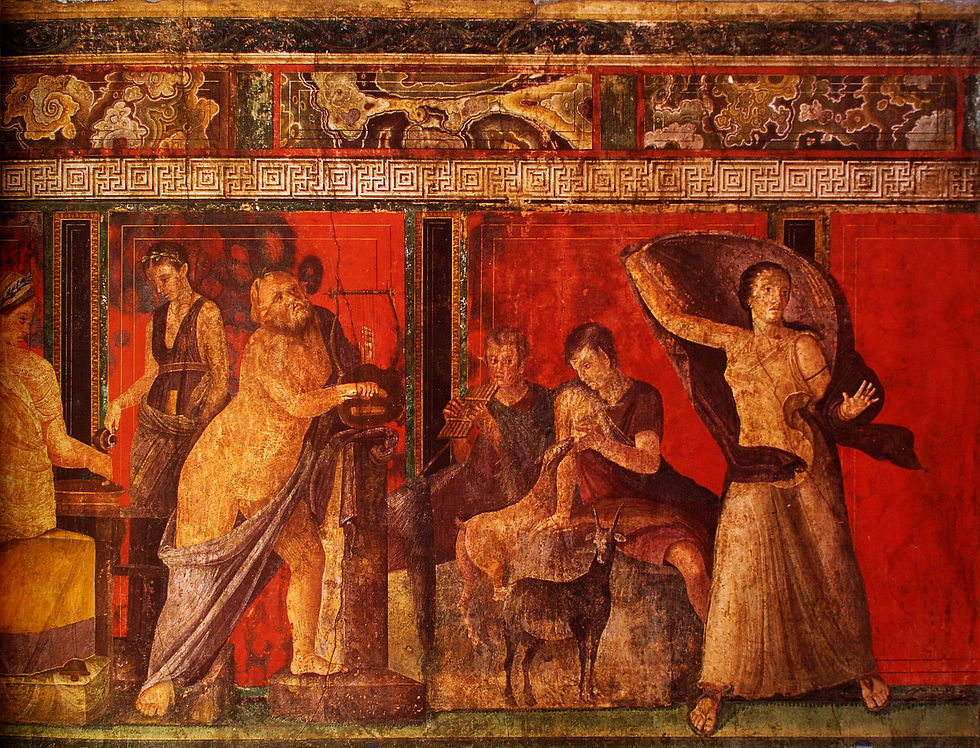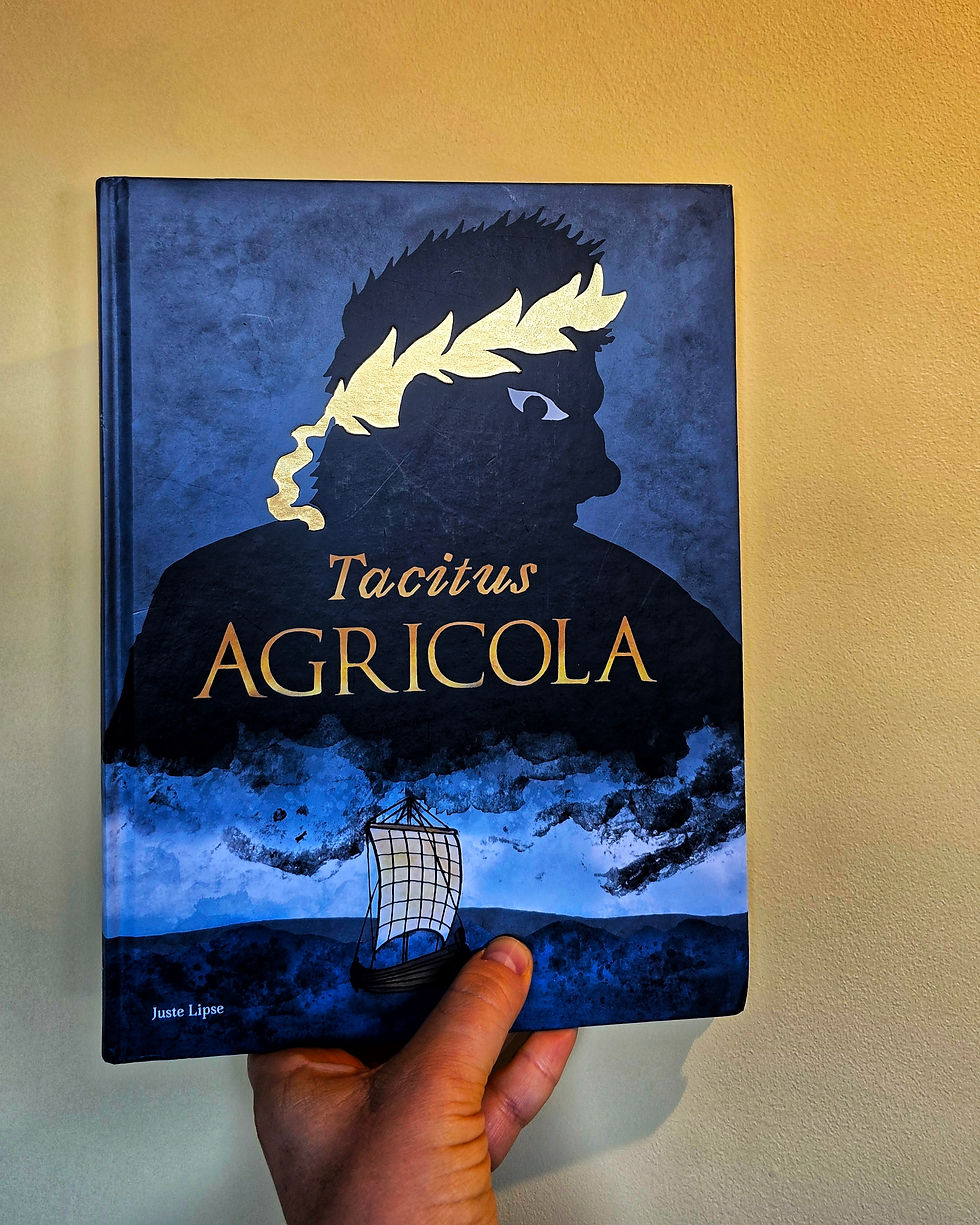I baked my first loaf of Roman bread and this is what happened
- Ana Martin

- Aug 6, 2020
- 4 min read
Roman Britain food week is around the corner for my family, so I have started experimenting with what I am going to put on the table, starting with a beautiful loaf of Pompeian bread called panis quadratus.
Before I dive into the recipe and you watch the video of how it turned out, bear in mind the three main guiding principles of this experiment – I must admit there has been some negotiation with the family here:
1. We want a taste of Roman Britain: the main aim here is not an accurate historical replica (this is actually quite a different enterprise!) but to eat great food and talk about the history of the different ingredients we will be cooking with, in a language even my pre-schooler will understand.
2. We are going to cook from a pantry of ingredients close to those available in Roman Britain, but they should be widely available in the UK – hello Vietnamese Fish Sauce! You will be able to cook anything you want at home with zero to none ingredient hunting.
3. We are only going to be very strict on – and this has come with some coaxing- key ingredients, so it is going to be a no tomato no potato no chocolate week, amongst other family favourites.

Now, let’s take a look at my modern panis quadratus!
The ingredients
For this first loaf I mostly wanted to explore the shaping, so I went with my very familiar white and wholemeal wheat flour combination, as well as dried yeast – I am making some sourdough especially for next week, so that should yield quite different results!
The proportions I used were based on the book Bread by Paul Hollywood, which is the book I used to learn to bake bread quite some ago and a close ally in my kitchen! Other than that, I just added sea salt, olive oil and water.
Working the dough
I was not keen on getting any donkeys for the process, so I used pre-ground flour. However, I wanted to knead it myself in order to experience what it is like to make bread with different flours – I am going to try with buckwheat, barley etc next week. It took me around 20min of very pleasant kneading. The dough rested for around 2 hours and then I knocked out the air and shaped it.

Getting the looks of a Pompeian loaf
Here is where I have done most of my research. I was quite keen to get it to look like those carbonised Pompeian ones (minus the burnt), just as if it was straight from a Pompeian fresco.
My opinion is that panis quadratus was made with a single ball of dough, rounded, flattened and then limited in shape by a cord. This would have ensured standard sizes helped with mass production. Some people think it was made with two stuck pieces – a bit like a cottage loaf. I think that that model could explain some of the shape but not the imagery and material remains that we have.

I used cooking twine around my dough to make it around 20cm. The twine I chose was too thin, so next time I am going to find some food grade thicker one to stop it from being swallowed into the dough.
It is somewhat confusing that a round loaf of bread is called ‘quadratus’ (squared). However, it becomes easily explained if you think about the well-known segmentation in 8 pieces. This would have been achieved by segmenting the bread with four dividing lines. This would have made the bread easier to portion and also maybe helped in its use as a utensil to scoop food.
I had seen online plenty of people scoring the bread to achieve that segmented effect - there are great videos out there with all sorts of ingenious proposals! However, I do not believe that works well: it provides an outlet for the steam and ends up looking great and crunchy but very different from the indented shape of the Roman wedges. I tried to achieve this with my twine again, but it was too thin and either it did not press it enough or it actually damaged the surface allowing the steam to escape.
Next time I am going to try cooking with some sort of mould keeping the pieces in place – should I use skewers? Perhaps a good idea will be to used more twine to shape it and keep it in place during the baking process. Probably I will need to push the twine in on the center to achieve the nice valley one can see on the real loaves.
It is possible that when I start using a dough with less spring that will stop being a problem. In fact, panis quadratus looks to me a bit like soda bread in texture, and my soda bread does get nicely segmented by cutting it when I cook it.
Roman bread could be stamped with a baker’s mark. I made a little logo of a column and pressed it on the side. That did the trick quite nicely, as you can see from the pictures!
The last step was a light dusting of flour. That gave the bread a lovely look, but next time I will work with water as well, because I am quite keen on getting a crunchier crust.

The cooking method
As it is Roman week, I have liberated myself from the watch, but not from electricity - I might just bbq a couple of things later on. I put the bread into the oven at 220 degrees Celsius, then brought it down to 200 degrees Celsius once the crust was established to finish cooking it. I decided it was cooked when it looked right and sounded hollow inside.

The result
Overall, as you can see in the youtube video below, I am very pleased with my Roman bread reproduction. It has gotten me thinking about wheat as in ingredient and different baking methods, and I am already looking forward to giving other flours and flour combinations a go, not to speak about my bubbling sourdough starter!

Would you like to cook along during the Roman week starting on the 17th? Subscribe to my blog or watch my youtube channel for updates and a list of ingredients.




Comments